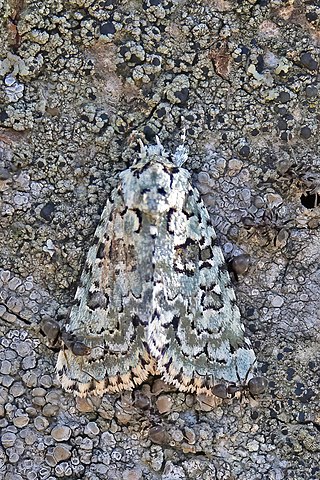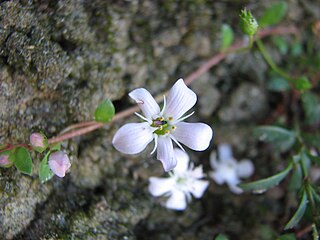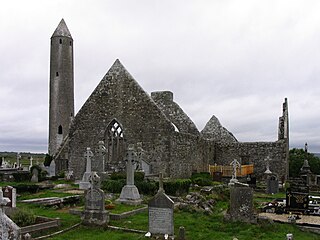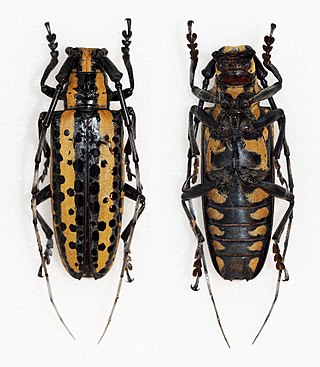
Johann Reinhold Forster was a German Reformed (Calvinist) pastor and naturalist who made contributions to the early ornithology of Europe and North America. He is best known as the naturalist on James Cook's second Pacific voyage, where he was accompanied by his son Georg Forster. These expeditions promoted the career of Johann Reinhold Forster and the findings became the bedrock of colonial professionalism and helped set the stage for the future development of anthropology and ethnology. They also laid the framework for general concern about the impact that alteration of the physical environment for European economic expansion would have on exotic societies.

Alnus incana, the grey alder, tag alder or speckled alder, is a species of multi-stemmed, shrubby tree in the birch family, with a wide range across the cooler parts of the Northern Hemisphere. Tolerant of wetter soils, it can slowly spread with runners and is a common sight in swamps and wetlands.

The marbled green is a moth of the family Noctuidae. The species was first described by Johann Reinhold Forster in 1771. It is found in Europe. Its wings are white with several shades of green. However, the green fades.

Banksia incana, commonly known as the hoary banksia, is a species of shrub that is endemic to the south-west of Western Australia. It has hairy stems, narrow linear leaves, heads of bright yellow flowers and later, up to thirty-six follicles covered with greyish hairs in each head.

Miltochrista miniata, the rosy footman, is a moth of the family Erebidae. The species was first described by Johann Reinhold Forster in 1771. It is found in the temperate parts of the Palearctic realm – Europe, Asia Minor, Caucasus, northern Kazakhstan, southern Siberia, Amur, Primorye, Sakhalin, southern Kuriles, Heilongjiang, Liaoning, Hebei, Inner Mongolia, Shanxi, Sichuan, Korea and Japan, but may be replaced by Miltochrista rosaria in the eastern Palearctic.

Chrysolina hyperici, the Saint John's wort beetle is a species of beetles of the family Chrysomelidae.

Samolus repens is a species of water pimpernel native to Australia, New Zealand and near-by Pacific islands, and South America, where it is common in temperate and subtropic coastlines. Common names include creeping brookweed and creeping bushweed. Samolus repens has small white or occasionally pink flowers with a flowering period from September through to March or April.

The second voyage of James Cook, from 1772 to 1775, commissioned by the British government with advice from the Royal Society, was designed to circumnavigate the globe as far south as possible to finally determine whether there was any great southern landmass, or Terra Australis. On his first voyage, Cook had demonstrated by circumnavigating New Zealand that it was not attached to a larger landmass to the south, and he charted almost the entire eastern coastline of Australia, yet Terra Australis was believed to lie further south. Alexander Dalrymple and others of the Royal Society still believed that this massive southern continent should exist. After a delay brought about by the botanist Joseph Banks' unreasonable demands, the ships Resolution and Adventure were fitted for the voyage and set sail for the Antarctic in July 1772.

The Dean of Kilmacduagh was the priest in charge of the Diocese's Cathedral, Kilmacduagh monastery.

Deliathis is a genus of flat-faced longhorns in the beetle family Cerambycidae. There are about 15 described species in Deliathis, found in the Neotropics.
Deliathis batesi is a species of beetle in the family Cerambycidae. It was described by Charles Joseph Gahan in 1888. It is known from Mexico.
Deliathis bifurcata is a species of beetle in the family Cerambycidae. It was described by Dillon and Dillon in 1941. It is known from Honduras and El Salvador.
Deliathis buquetii is a species of beetle in the family Cerambycidae. It was described by Tasté in 1841, originally under the genus Taeniotes. It is known from Honduras, Belize, and Mexico. It contains the varietas Deliathis buquetii var. mira.

Deliathis diluta is a species of beetle in the family Cerambycidae. It was described by Charles Joseph Gahan in 1892. It is known from Mexico, Guatemala, El Salvador, and Nicaragua.

Deliathis impluviata is a species of beetle in the family Cerambycidae. It was described by Lacordaire in 1869. It is known from Mexico and Guatemala.

Deliathis nivea is a species of beetle in the family Cerambycidae. It was described by Henry Walter Bates in 1869. It is known from Nicaragua, Guatemala, Costa Rica, Honduras, and Panama.
Deliathis parincana is a species of beetle in the family Cerambycidae. It was described by Stephan von Breuning in 1971. It is known from Mexico.
Deliathis quadritaeniator is a species of beetle in the family Cerambycidae. It was described by White in 1846. It is known from Panama, Costa Rica, Ecuador, Colombia, and Venezuela.
Deliathis neonivea is a species of beetle in the family Cerambycidae. It was described by Stephan von Breuning in 1943, but the original name is a junior homonym of Deliathis nivea so its name was replaced in 2018. It is known from Mexico.
Today the term South Seas, or South Sea, most commonly refers to the portion of the Pacific Ocean south of the equator. The term South Sea may also be used synonymously for Oceania, or even more narrowly for Polynesia or the Polynesian Triangle, an area bounded by the Hawaiian Islands, New Zealand and Easter Island. Pacific Islanders are commonly referred to as South Sea Islanders, particularly in Australia.













